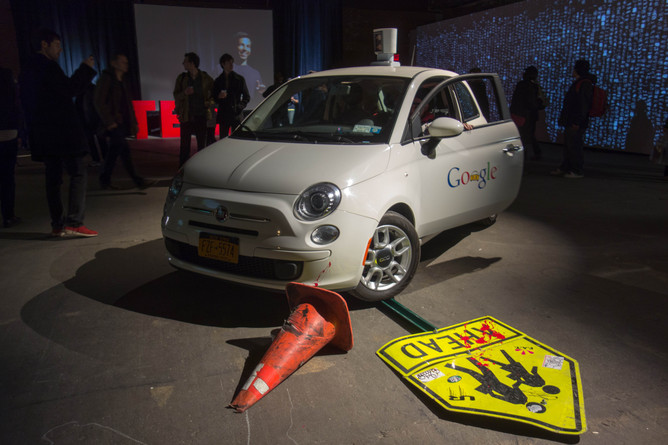Robot Laws: How to Regulate Driverless Cars & Robo-Surgeons

If a self-driving car causes an accident or a surgical robot kills a patient, whose fault is it? These are some of the questions a recent report funded by the European Union sought to answer.
Science fiction writer Isaac Asimov famously wrote about the "three laws of robotics." Essentially, the laws state that a robot may not injure a human being, that it must obey orders given by humans and that it must protect its own existence when this doesn't conflict with the first two laws.
Similarly, the newly released RoboLaw guidelines aim to set down basic principles for governing robot behavior in real life. The guidelines also aim to determine whether existing laws are adequate to regulate new robotic technologies, ranging from self-driving vehicles to robot caretakers. [Super-Intelligent Machines: 7 Robotic Futures]
The RoboLaw consortium, composed of Italian experts in law, robotics and engineering, developed the guidelines and released them on Sept. 22, presenting them at a session on legal affairs at the European Parliament on Sept. 24.
Self-driving cars
Self-driving vehicle technology has been steadily advancing, and Google's self-driving car has already logged thousands of miles on public roads. In May, California became the first U.S. state to allow testing of driverless cars on public roads, and the United Kingdom announced plans to allow the vehicles on public roads by 2015.
"Now is the time to address the ethical and legal challenges that technology imposes on society," the authors of the RoboLaw report wrote.
Get the world’s most fascinating discoveries delivered straight to your inbox.
The report calls for public discussions about the safety issues related to self-driving cars, as well as research on how to keep the auto insurance market competitive. The ideal system would allow an accident victim to obtain compensation through insurance rather than through product liability, the authors wrote.
Surgical robots
As robotic cars begin invading public roads, other machines are finding their way into hospitals.
Robotic surgery systems are increasingly being used to complement the work of human physicians. The robots can improve the accuracy of the surgeon, and can even allow doctors to operate on patients remotely.
Current systems include both tele-operated robots that surgeons control using a console, and autonomous systems that perform an operation based on previously programmed instructions.
Such robotic systems present difficult challenges to the legal system, the report stated.
"When human beings act without using technologies, it is sometimes hard enough to determine who is responsible for what," according to the report. "The introduction of [technology] artifacts makes things even more complicated."
The report recommends requiring surgeons to meet professional requirements for training in robotic surgery, and ensuring that doctors obtain a patient's informed consent. The report further suggests that surgeons should not be liable for damage to a patient caused by a robot's faulty actions. [The 6 Strangest Robots Ever Created]
Robotic prosthetics
But the operating room isn't the only place where robots intersect with medicine.
Prosthetics have improved steadily in recent years, with the technology giving wearers more mobility and greater freedom of movement, according to the RoboLaw report.
The potential of robotic prosthetics to substantially improve the living conditions of people with disabilities is "self-evident," the authors wrote. But the advances also create thorny issues. Even if the technology develops slowly, "the numerous ethical and legal issues raised by such applications need to be addressed at the earliest stage possible," the authors said.
The report proposes a legal definition of "robotic prostheses," and says that before being implanted, the devices should be treated as objects, but after implantation, they should be considered part of the human body. The report also called for continued discussion.
"It is advisable that public debate is initiated and further research projects dealing with the philosophical and legal issues of human enhancement [are] funded," the authors wrote.
Care robots
But those who are disabled aren't the only ones who stand to benefit from robotic technology in the future. Robots could help address government concerns about the aging population, which puts pressure on public budgets amid a decline in the number of caretakers, the report says.
"Advances in research in personal care robots could help to tackle these challenges," the authors wrote. For example, robots could help the elderly by providing food or medication, helping them to bathe and serving as a memory aid, the authors said.
The report says that the introduction of robot caretakers should not replace traditional forms of care, and the patient's autonomy should be respected. If possible, the robot should also be designed so that users can adjust the level of control they have over the machine.
Follow Tanya Lewis on Twitter and Google+. Follow us @livescience, Facebook & Google+. Original article on Live Science.

